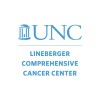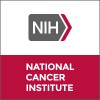
Propofol Versus Propofol-Fentanyl as Sedation For Lumbar Puncture in Children With Acute Leukemia/Lymphoma...
LeukemiaLymphomaThe hypothesis of the study is that propofol-fentanyl sedation for lumbar punctures in children with acute leukemia/lymphoma results in fewer adverse events than propofol sedation alone. Secondary hypotheses state that propofol-fentanyl sedation results in a better sedation induction, recovery profile and is preferred by patients/families. The study is a double blind, randomized, placebo controlled crossover study. Following the induction phase of chemotherapy, children will be randomized in a crossover manner to receive either fentanyl-propofol or propofol-placebo for future lumbar punctures. Patients will be studied on two separate occasions, once with propofol-placebo (normal saline) and once with propofol-fentanyl. Children will be monitored continuously by pulse oximetry, electrocardiogram (ECG) and direct nursing and physician observation during the sedation in accordance with the University of Wisconsin (UW) Pediatric Policy and Procedure. Propofol will be titrated to a Children's Hospital of Eastern Ontario Pain Scale (CHEOPS) score of ≤ 7 for all children. Oxygen saturation, respiratory rate, heart rate and blood pressure will be recorded every 3 minutes by a study investigator during sedation.

Doxorubicin Hydrochloride Liposome and Bortezomib in Treating Patients With Refractory Hematologic...
Breast CancerLeukemia5 moreRATIONALE: Drugs used in chemotherapy, such as doxorubicin hydrochloride liposome, work in different ways to stop the growth of cancer cells, either by killing the cells or by stopping them from dividing. Bortezomib may stop the growth of cancer cells by blocking some of the enzymes needed for cell growth. Giving doxorubicin hydrochloride liposome together with bortezomib may kill more cancer cells. PURPOSE: This phase I/II trial is studying the side effects and best dose of bortezomib when given together with doxorubicin hydrochloride liposome and to see how well they work in treating patients with refractory hematologic cancer or malignant solid tumor or metastatic breast cancer.

Doxorubicin (Doxil) Combined With Rituxan, Cyclophosphamide, Vincristine and Prednisone in Newly...
Non-Hodgkin's LymphomaThe current standard treatment for non-Hodgkin's lymphoma involves drugs called cyclophosphamide, doxorubicin, vincristine, prednisone and rituxan in a regimen called "R-CHOP." Using R-CHOP therapy, complete disappearance of disease is expected in over 50% of people. One of the active drugs in the R-CHOP regimen, doxorubicin, has previously been reformulated and been placed in a fatty bubble called a liposome. The reason for placing the drug in the liposome is that there is evidence that the liposome is better taken up by tumors. This liposomally encapsulated form of doxorubicin called Doxil has shown similar or better anti-tumor against certain tumors with reduced side effects. Doxil is FDA approved for ovarian cancer. However its use in non-Hodgkin's lymphoma is still investigational. By substituting Doxil for doxorubicin in the R-CHOP regimen, it is hoped this treatment will be better at shrinking tumors and with reduced side effects. The purpose of this study is to see how well the combination of Doxil, rituximab, cyclophosphamide, vincristine and prednisone (DR-COP) are in shrinking tumors in patients with non-Hodgkin's lymphoma.

Treatment for Patients With Stage III or IV Non-Hodgkin Lymphoma
Lymphoblastic LymphomaThe main purpose of this study is to determine if it is feasible to administer an intensified, multi-agent chemotherapy regimen for children with stage III and IV non-Hodgkin lymphoma and to find out what the toxicities are.

Chemotherapy and HAART to Treat AIDS-related Primary Brain Lymphoma
AIDS-Related-Primary Central Nervous System LymphomaThis study will investigate the use of chemotherapy plus highly active antiretroviral therapy (HAART) in patients with Acquired Immunodeficiency Syndrome (AIDS)-related primary brain lymphoma. None of the drugs used in this study are experimental, but chemotherapy plus HAART has not been established as a standard treatment in patients with AIDS. The chemotherapy regimen used in this study (see below) was chosen because it may be less toxic to immune cells called T-lymphocytes than most drug treatments for lymphoma. People with AIDS 18 and older and have primary brain lymphoma may be eligible for this study. Candidates are screened with a medical history and physical examination, magnetic resonance imaging (MRI), computed tomography (CT) and positron emission tomography (PET) scans, cerebrospinal fluid studies, brain biopsy at tumor sites, if possible, electrocardiogram and blood tests. Participants undergo six 2-week "induction treatment" cycles of HAART plus chemotherapy with methotrexate, rituximab and leucovorin, followed by two 4-week "consolidation" treatment cycles using HAART, methotrexate and leucovorin, and then HAART alone. Rituximab is given by intravenous (intravenous (IV), through a vein) day 1 of each cycle. Also on day 1 IV fluids are given to lower acidity in the urine to protect the kidneys from the methotrexate. On day 2, methotrexate is infused through a vein over 4 hours. Starting 24 hours after initiation of the methotrexate infusion, leucovorin is given every 3 to 6 hours (first IV and then possibly by mouth) until the drug decreases to a target level in the blood. HAART is begun as soon as possible. The specific HAART regimen for each patient is determined individually. All patients are hospitalized the first week of every 2-week treatment cycle for safety monitoring. In addition to HAART and chemotherapy, patients undergo the following tests and procedures: Intellectual functioning: Before starting treatment, patients are tested for their ability to understand basic concepts and coordination in order to be able to evaluate how the brain lymphoma affects thinking and concentration. After the lymphoma appears to have resolved, more formal and intensive tests are done. The intensive tests are repeated each year, and shorter, interim tests are done about every 6 months. Also, a specialist periodically monitors patients' understanding of HAART and the importance of this therapy. Blood tests: Blood is drawn every day during hospitalizations to measure methotrexate levels and to evaluate kidney and liver function and blood counts. Blood is also drawn before starting therapy, when the lymphoma disappears, 6 months after completing treatment, and any time it appears that the lymphoma may have recurred to test for Epstein-Barr virus (EBV), a virus that is almost always present in AIDS-related primary brain lymphoma. Imaging tests: Patients undergo magnetic resonance imaging (MRI) and positron emission tomography (PET) scans periodically to monitor the effects of treatment on the lymphoma. MRI scans are done after the 2nd, 4th, 6th, and 8th treatments, then every 2 months for three times, every 3 months for six times, every 6 months for four times, and then every year for 5 years, or sooner if there is a concern about the brain. PET scans are done after the first cycle, after the MRI suggests the lymphoma is gone, and then yearly. Lumbar puncture (spinal tap): This test is done to look for EBV in the cerebrospinal fluid (CSF). Under local anesthetic, a needle is inserted in the space between the bones in the lower back where the CSF circulates below the spinal cord and a small amount of fluid is collected through the needle. This test is done at the same times as the blood tests for EBV. Eye examinations: Patients' eyes are examined periodically because brain lymphoma can sometimes spread to the eye and because some people with AIDS-related primary brain lymphoma are at risk of certain eye infections.

A Comparative Study for Non-Hodgkin's Lymphoma in Hepatitis B Virus Carriers
Non-Hodgkin's Lymphoma* AIMS OF THE STUDY To test if steroid-free chemotherapeutic regimens decrease the risk of HBV reactivation and hepatitis development in HBsAg (+) carriers. To compare the efficacy of steroid-free chemotherapeutic regimens with that of steroid-containing regimens in terms of lymphoma control. To study the change of activity of HBV and other hepatotropic viruses during the course of chemotherapy.

Study of R-ACVBP Regimen Supported by Pegfilgrastim in High-Risk Diffuse Large B-Cell Lymphoma
Untreated CD20-positive Large B-cell LymphomaEvaluation of the efficacy of a single injection of Pegfilgrastim (6mg) administered at day 3 of each cycle of R-ACVBP regimen during 4 cycles in patients with CD20+ diffuse large B-cell lymphoma presenting at least 2 adverse prognostic factor of the age-adjusted international prognostic index (Aa-IPI).

Bortezomib and Gemcitabine Hydrochloride in Treating Patients With Relapsed or Refractory Hodgkin's...
LymphomaRATIONALE: Bortezomib may stop the growth of cancer cells by blocking some of the enzymes needed for cell growth. Drugs used in chemotherapy, such as gemcitabine hydrochloride, work in different ways to stop the growth of cancer cells, either by killing the cells or by stopping them from dividing. Giving bortezomib together with gemcitabine hydrochloride may kill more cancer cells. PURPOSE: This phase II trial is studying how well giving bortezomib together with gemcitabine hydrochloride works in treating patients with relapsed or refractory Hodgkin's lymphoma.

Efficacy Study of Outpatient Therapy for Lymphoma
Non-Hodgkin's LymphomaHodgkin's DiseaseThis is a Phase II trial evaluating the efficacy (overall response rate) of a risk-adjusted outpatient based approach to lymphoma salvage therapy with vinorelbine, gemcitabine and pegfilgrastim and/or gemcitabine, ifosfamide, vinorelbine and pegfilgrastim.

Study of CHOP + Campath for T-Cell, Null Cell, or Natural Killer (NK)-Cell Lymphoma
T-Cell LymphomaLymphoma1 morePrimary Objective: To determine the toxicity profile and tolerability of alemtuzumab (Campath) when administered in combination with cyclophosphamide, doxorubicin, vincristine, and prednisone (CHOP) chemotherapy (C-CHOP) in patients with T-cell, null-cell and NK-cell lymphomas. Secondary Objectives: To evaluate response rate, overall survival, and disease-free survival in patients with T-cell, null-cell, and NK-cell lymphomas treated with Campath + CHOP chemotherapy. To assess the incidence of cytomegalovirus (CMV) reactivation in patients with these lymphomas treated with the Campath + CHOP combination. To determine features which might be predictive of resistance to treatment or predictive of relapse, including the absence of glycosylphosphatidylinositol (GPI)-linked proteins.
